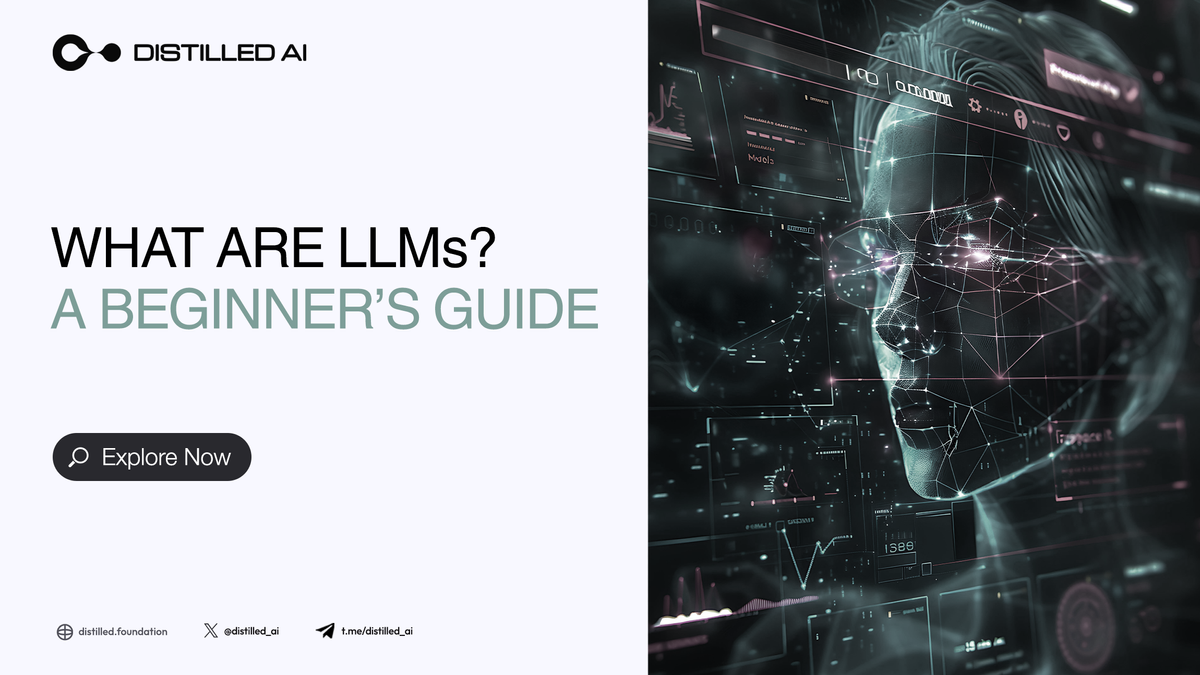What Are Large Language Models (LLMs)? A Beginner’s Guide to AI’s Revolutionary Tool

Large Language Models (LLMs) have taken the AI world by storm, enabling more sophisticated text generation, natural language understanding, and contextual insights than ever before. From chatbots and virtual assistants to automatic translation and content creation, LLMs power applications that mimic human-like communication. If you’re new to the field, this guide demystifies what LLMs are, how they work, and why they’re seen as a revolutionary step in artificial intelligence.
1. Defining Large Language Models
Core Concept
An LLM is a type of machine learning model—often built on deep neural network architectures—that’s trained on massive amounts of textual data. By learning the statistical relationships between words and phrases, it can generate or interpret text in a remarkably fluent manner.
Why “Large?”
The “large” aspect refers to the billions (or even trillions) of parameters these models contain. Parameters are the model’s internal variables that help it understand language patterns, much like neurons in a human brain.
2. How LLMs Work
Training on Big Data
LLMs ingest text from diverse sources—like web pages, books, and articles—to learn grammar, context, and even world knowledge. This training process, called self-supervised learning, doesn’t rely on manually labeled data.
Transformers and Attention
Most LLMs use a transformer architecture with an attention mechanism. In plain terms, “attention” allows the model to focus on different parts of a sentence (or multiple sentences) to figure out the most relevant context.
Result: A powerful system that excels at predicting the next word or phrase, creating text that sounds natural and coherent.
3. Key Advantages of LLMs
1. Versatility: LLMs handle tasks ranging from translation and summarization to more creative pursuits like storytelling.
2. Context-Aware: They can keep track of conversation flow, making them ideal for chatbots or customer support.
3. Scalability: With ever-larger training datasets and parameters, LLMs continue to improve in capability.
4. Real-World Applications
• Customer Service: AI chatbots use LLMs to understand user queries and provide more human-like responses.
• Content Creation: Tools that draft blog posts, marketing copy, or social media updates rely on advanced text generation models.
• Research Assistance: LLMs can help parse scientific papers, provide summaries, or even suggest references, accelerating academic and technical workflows.
Why It Matters: By handling repetitive tasks more efficiently, LLMs free human experts to focus on innovation, strategy, and creativity.
5. Getting Started with LLMs
Beginner-Friendly Platforms
Many cloud-based services (like OpenAI, Hugging Face, and others) offer API access, so you don’t need high-end hardware or deep coding expertise. Experimenting with pre-trained models is a great first step.
Ethical and Responsible Use
Because LLMs can generate convincingly human-like text, it’s crucial to use them ethically—maintaining transparency (clearly stating when content is AI-generated) and avoiding misuse (like spreading misinformation).
Takeaway: A mindful approach to LLM experimentation helps newcomers learn while respecting integrity and user trust.
Large Language Models have quickly become a cornerstone in the AI landscape, driving innovations in text-based applications from customer service to creative content. By understanding how these models work, why they’re unique, and where they excel, beginners can appreciate the profound shift LLMs represent in AI development. As their capabilities grow, so do the possibilities for enhanced human-machine collaboration and transformative user experiences.
Key Takeaways
1. Massive Training: LLMs learn from vast text datasets, discovering the nuances of language without explicit instructions.
2. Transformers: Advanced architectures like transformers and attention power LLMs’ impressive contextual capabilities.
3. Practical Impact: From virtual assistants to content creation, LLMs streamline text-focused tasks for businesses and individuals.
4. Ethical Usage: Responsible adoption involves clear labeling, data privacy, and sensitivity to potential misuse or bias.
By grasping the basics and best practices of Large Language Models, you’ll be well-positioned to explore AI’s revolutionary impact on communication, collaboration, and creative processes.



